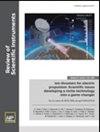Characterization of the response of radiochromic film to quasi-monoenergetic x rays through a cross-calibration with image plates
IF 1.3
4区 工程技术
Q3 INSTRUMENTS & INSTRUMENTATION
引用次数: 0
Abstract
Radiochromic film (RCF) and image plates (IPs) are both commonly used detectors in diagnostics fielded at inertial confinement fusion (ICF) and high-energy-density physics (HEDP) research facilities. Due to the intense x-ray background in all ICF/HEDP experiments, accurately calibrating the optical density of RCF as a function of x-ray dose, and the photostimulated luminescence per photon of IPs as a function of x-ray energy, is necessary for interpreting experimental results. Various measurements of the sensitivity curve of different IPs to x rays have been performed [Izumi et al., Proc. SPIE 8850, 885006 (2013) and Rosenberg et al., Rev. Sci. Instrum. 90(1), 013506 (2019)]; however, calibrating RCF is a tedious process that depends on factors such as the orientation in which the RCF is scanned in the film scanner and the batch of RCF used. These issues can be mitigated by cross-calibrating RCF with IPs to enable the use of IPs for the determination of dose on the RCF without scanning the RCF. Here, the first cross-calibration of RCF with IPs to quasi-monoenergetic titanium, copper, and molybdenum K-line x rays is presented. It is found that the IP-inferred dose rates on the RCF for the Ti and Mo x rays agree well with the measured dose rates, while the IP-inferred dose rate for the Cu x rays is larger than the measured dose rate by ∼2×. Explanations for this discrepancy and plans for future work are discussed.通过与图像板进行交叉校准,确定放射性变色薄膜对准单能 X 射线的响应特性
射电变色膜(RCF)和成像板(IP)都是惯性约束聚变(ICF)和高能量密度物理(HEDP)研究设施现场诊断中常用的探测器。由于所有 ICF/HEDP 实验都有强烈的 X 射线背景,要解释实验结果,就必须准确校准 RCF 的光密度与 X 射线剂量的函数关系,以及 IP 的每光子光刺激发光与 X 射线能量的函数关系。已经对不同 IP 对 X 射线的敏感性曲线进行了各种测量[Izumi 等人,Proc. SPIE 8850, 885006 (2013)和 Rosenberg 等人,Rev. Sci. Instrum.90(1), 013506 (2019)];然而,校准 RCF 是一个繁琐的过程,取决于 RCF 在胶片扫描仪中的扫描方向和所使用的 RCF 批次等因素。这些问题可以通过将 RCF 与 IPs 进行交叉校准来缓解,从而无需扫描 RCF 即可使用 IPs 测定 RCF 上的剂量。这里介绍的是首次用 IP 对准单能钛、铜和钼 K 线 X 射线对 RCF 进行交叉校准。研究发现,钛和钼 X 射线在 RCF 上的 IP 推断剂量率与测量剂量率非常吻合,而铜 X 射线的 IP 推断剂量率比测量剂量率大 2 倍。本文讨论了造成这种差异的原因以及今后的工作计划。
本文章由计算机程序翻译,如有差异,请以英文原文为准。
求助全文
约1分钟内获得全文
求助全文
来源期刊

Review of Scientific Instruments
工程技术-物理:应用
CiteScore
3.00
自引率
12.50%
发文量
758
审稿时长
2.6 months
期刊介绍:
Review of Scientific Instruments, is committed to the publication of advances in scientific instruments, apparatuses, and techniques. RSI seeks to meet the needs of engineers and scientists in physics, chemistry, and the life sciences.
 求助内容:
求助内容: 应助结果提醒方式:
应助结果提醒方式:


